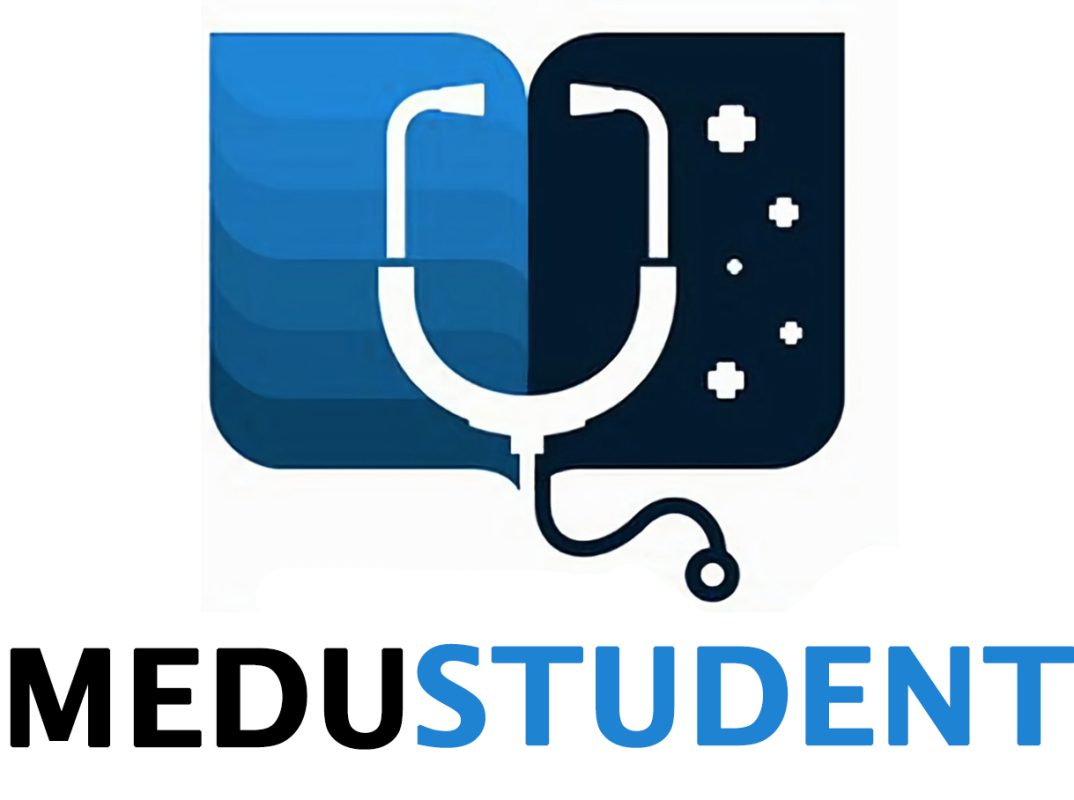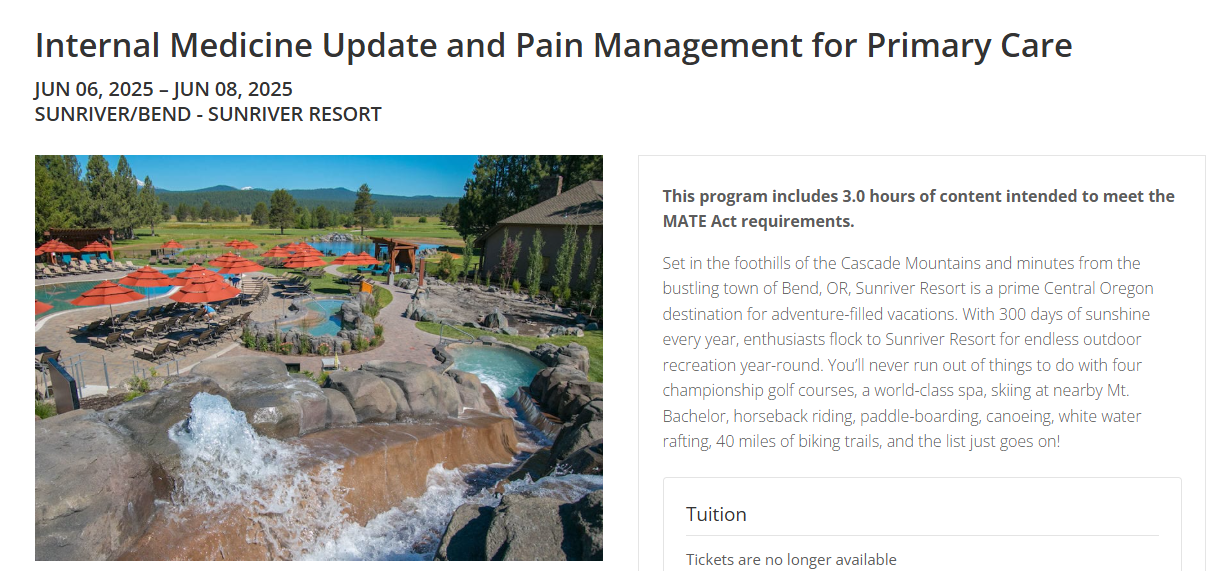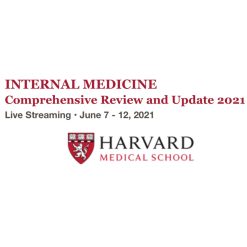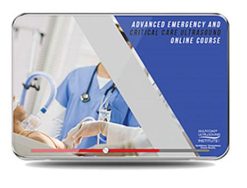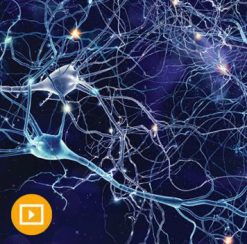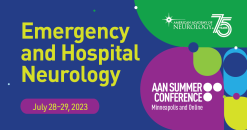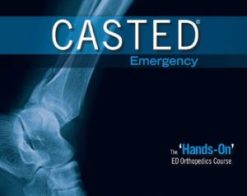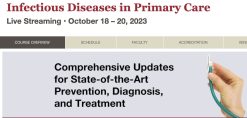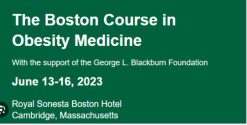MCE Conferences Internal Medicine Update and Pain Management for Primary Care Jun 06, 2025 – Jun 08, 2025
$75,00
This Product is shared via google drive download link, So please share your correct Gmail id while placing the order .Please note that there are no CME points or certificate associated with this course Samples for Courses Can be found here : Free Samples Here!
MCE Conferences
Internal Medicine Update and Pain Management for Primary Care – 12 Credits
This program includes 3.0 hours of content intended to meet the Medication Access and Training Expansion (MATE) Act requirements for DEA license renewal.
Overview
This conference is designed to provide primary care practitioners with up-to-date, evidence-based information on commonly encountered issues in Internal Medicine and Pain Management, while suggesting pragmatic approaches to clinical management. The discussion-based format of the conference will encourage audience participation through dynamic lectures, case-based studies, and hands-on workshops. Keynote speakers will present and critically assess recent advancements and industry updates in Internal Medicine and Pain Management to enhance the knowledge base and core competence of attendees. The successful completion of this interactive program diagnosing, treating, and prescribing the most effective courses of treatment, with the ultimate goal of improving patient outcomes.
Target Audience
All Physicians and other Healthcare Professionals seeking clinical information about issues in Internal Medicine and Pain Management.
Schedule
Friday, June 6th
7:30 AM – 8:30 AM:
Assessment of Low Back Pain
Objectives: 1) Discuss how multiple structures in the lumbar spine may serve as pain generators, including the disc, facet joint, myofascial, and ligamentous structures 2) Review, demonstrate, and practice basic physical exam techniques used for assessing spine-related pain conditions 3) Differentiate lumbar radiculopathy signs and symptoms from other causes of low back pain, including facet-mediated, soft tissue, and sacroiliac joint pain
8:30 AM – 8:35 AM ~ BREAK
8:35 AM – 9:35 AM:
Management of Fibromyalgia
Objectives: 1) Become familiar with recent pathophysiology related to mechanisms of fibromyalgia 2) Discuss recent clinical criteria for diagnosing fibromyalgia in a primary care setting 3) Identify a multidisciplinary approach that can be applied to patients with chronic widespread pain
9:35 AM – 9:45 AM ~ BREAK
9:45 AM – 10:45 AM:
Colon, Breast, Prostate, and Lung Cancer Screening Update
Objectives: 1) Review current USPSTF recommendations regarding colon, breast, prostate, and lung cancer screening 2) Review the literature that the USPSTF recommendations are based on 3) Consider how to discuss controversial topics, such as breast, lung, and prostate cancer screening with the patient
10:45 AM – 10:50 AM ~ BREAK
10:50 AM – 11:50 AM:
Musculoskeletal Problems in Primary Care
Objectives: 1) Review shoulder anatomy and workup of shoulder pain 2) Review knee anatomy and workup of knee pain 3) Review causes and treatments of hip pain
Saturday, June 7th
7:30 AM – 8:30 AM:
Common Rashes in Primary Care
Objectives: 1) Identify common rashes encountered in primary care 2) Review
approaches to the treatment of common rashes 3) Discuss recommendations regarding referrals to dermatology
8:30 AM – 8:35 AM ~ BREAK
8:35 AM – 9:35 AM:
Ophthalmologic Issues for the Primary Care Physician
Objectives: 1) Review basic eye anatomy 2) Review common ophthalmologic problems seen in primary care, such as eyelid disorders and red eye 3) Consider when an ophthalmology referral is needed and when it is urgent
9:35 AM – 9:45 AM ~ BREAK
9:45 AM – 10:45 AM:
Overview of Opioid Pharmacology, Assessment, and Management
Objectives: 1) Highlight pharmacologic differences between various opioids used for chronic pain management 2) Describe risk factors that may help to predict problematic opioid use, including addiction and misuse 3) Review validated screening tools used to help identify possible aberrant behaviors related to long-term opioid use 4) Review and utilize Patient Provider Agreements (PPAs) and Prescription Drug Monitoring Programs (PDMPs), as a means of improved monitoring of patients using opioid products
10:45 AM – 10:50 AM ~ BREAK
10:50 AM – 11:50 AM:
Rational Polypharmacy for Chronic Pain Management
Objectives: 1) Apply new pathophysiologic understanding to treating pain 2) Determine mechanisms of action for the various muscle relaxers and anticonvulsants commonly used to treat various chronic pain states 3) Use case examples to develop a deeper understanding of titration and adjustment of adjuvant analgesics
Sunday, June 8th
7:30 AM – 8:30 AM:
Approaching Difficult Conversations about Chronic Pain
Objectives: 1) Discuss the best approach in addressing the patient who is resistant to change 2) Describe a strategy for treating patients with anxiety around pain therapy 3) Characterize patients with clear addiction 4) Manage patients who are angry or upset in the office 5) Discuss the approach to patients who have lost self-control
8:30 AM – 8:35 AM ~ BREAK
8:35 AM – 9:35 AM:
Individualized Pain Treatments Demystified
Objectives: 1) Discuss best practices for tapering and weaning patients off opioids safely 2) Formulate an approach for converting patients between adjunctive analgesics 3) Review updates in non-opioid pain pharmacology, including advanced combination therapies
9:35 AM – 9:45 AM ~ BREAK
9:45 AM – 10:45 AM:
Self-Care: Finding Meaning in One’s Work and Beating Burnout
Objectives: 1) Discuss the trends of burnout among US healthcare workers 2) Recognize the causes and signs of employee burnout 3) Review evidence-based strategies to improve well-being and reduce burnout
10:45 AM – 10:50 AM ~ BREAK
10:50 AM – 11:50 AM:
Evidence-Based Approach to Complementary and Alternative Treatments
Objectives: 1) Review complementary and alternative treatments commonly used by patients 2) Discuss the evidence of the benefits for complementary and alternative treatments 3) Review the harms, side-effects, and drug interactions of complementary and alternative treatments
Related products
INTERNAL MEDICINE
Oakstone Intensive Update with Board Review in Geriatric and Palliative Medicine 2022
CRITICAL CARE / EMERGENCY MEDICINE
INTERNAL MEDICINE
CRITICAL CARE / EMERGENCY MEDICINE
The CASTED Course An emergency orthopaedic masterclass (CME VIDEOS)
FAMILY MEDICINE
ENDOCRINE / NUTRITION
